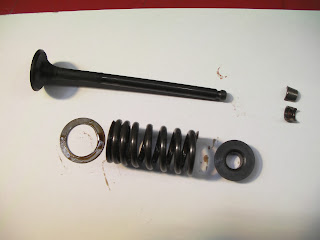Experiment
First we removed the valves and then measured them in three different places to check for ovality or if they are tapered. The measurements were the same all round which meant that the valves were not worn.
The second test we did was to see if the head was warped using a precise straight edge and a feeler gauge. Positioning the straight edge in different areas of the head we could see and measure how much the head warps using the feeler gauge.
Next we measured the camshaft journals and came lobes using a micrometer and checking that the measurements are correct according to the specifications. We also measured the camshaft end play using a DTI gauge that was attached to the end of the cylinder head.
Next we measured the camshaft journals and came lobes using a micrometer and checking that the measurements are correct according to the specifications. We also measured the camshaft end play using a DTI gauge that was attached to the end of the cylinder head.
Reflection
I found out that if the valves do not seal properly the valve heads do not transfer the heat from the combustion in the cylinder to the cylinder head, this causes the valve heads to over heat and burn. If the valves are damaged in any way they will need to be repaired or replaced. If the the gaps between the straight edge and the cylinder head is bigger than the specified values the head will need to be machined. when the head gets skimmed or machined the combustion chamber gets smaller creating a higher compression.


Good comment
ReplyDeleteHans